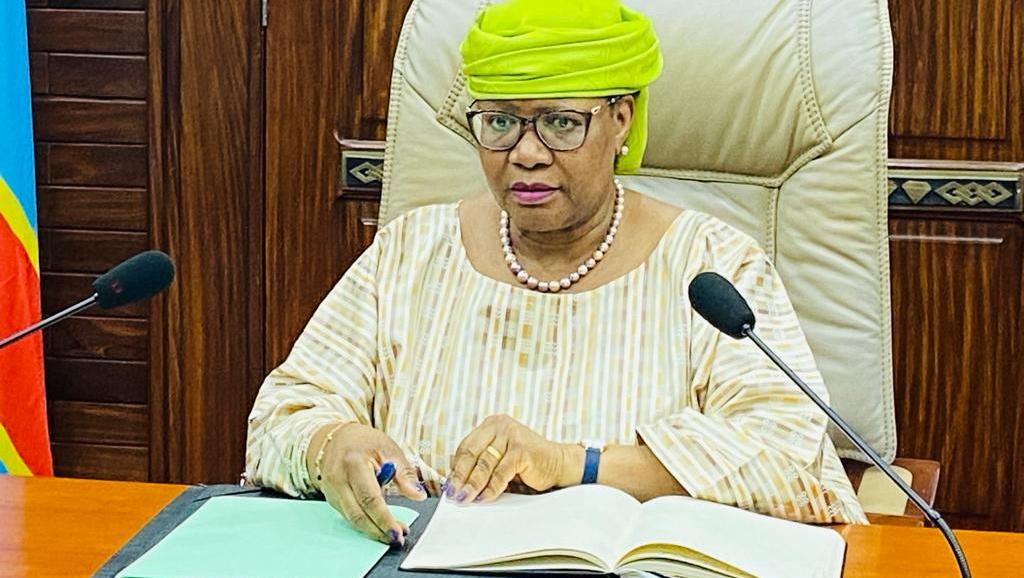DRC reinforces central bank autonomy, tightens risk
DRC’s independence signal targets tighter spreads and steadier funding; EMB tracks EM beta while HG=F and CL=F frame terms-of-trade risk as policy aims to keep inflation sub-10% and the CDF broadly stable through 2026.

The G24’s October 2025 reaffirmation of central-bank independence, with the Banque Centrale du Congo participating, is a material macro signal for the Democratic Republic of the Congo at a pivotal point in its stabilisation cycle. Real GDP is projected to expand by 5.3% in calendar 2025, broadly above the sub-Saharan Africa average near 4–4.5%. Headline inflation, which ran above 13% in mid-2024, eased toward 8.9% year on year by September 2025. The BCC’s policy rate stands at 15.0% as of October 2025, keeping the ex-ante real rate marginally positive and consistent with disinflation. General government debt remains contained for a frontier issuer at about 26% of GDP in 2025, the overall fiscal deficit is near 2.0% of GDP, and gross official reserves are roughly USD 4.4 billion (about 3.5 months of imports) at end-Q3 2025.
Policy independence is the mechanism that tightens the link between monetary settings and price dynamics. By insulating the BCC from fiscal pressure, the framework compresses inflation expectations, stabilises the exchange rate and lowers the sovereign risk premium embedded in local yields. With copper and cobalt exports central to fiscal receipts and the terms-of-trade channel volatile, an independent policy reaction function limits pass-through from global prices into core inflation. The Congolese franc has traded in a CDF 2,600–2,700 per USD range since June 2025 after a 9% depreciation in 2024, and narrower FX bid-ask spreads reflect improved market liquidity and clearer signalling.
Transmission into the domestic curve is visible. As disinflation gained traction through 2025, the short-end treasury curve flattened by about 150 basis points from Q1 to Q3, and overnight rates consistently printed within a 14–16% corridor around the policy rate, indicating firmer control of system liquidity. A more predictable rate path lowers balance-sheet volatility for banks, supports terming-out of local-currency issuance from 91-day to 364-day tenors, and reduces rollover risk. For the real economy, a stable nominal anchor protects real incomes and lifts demand in non-extractive sectors that account for roughly 60% of GDP, while steadier FX reduces hedging costs for firms with dollar revenues and local-currency expenses across mining services, logistics and retail supply chains.
For sovereign credit, independence compresses spreads through risk-premium channels. Frontier issuers commonly clear near 900–1,000 basis points over US Treasuries versus about 420 basis points for broad emerging-market composites tracked by EMB. A 100-basis-point improvement in the DRC’s effective spread would save approximately USD 10 million per year per USD 1 billion of external obligations—material in a system where annual external financing needs exceed USD 2 billion. The absence of an outstanding Eurobond means the saving is illustrative rather than realised, but it frames potential gains should the sovereign re-enter global markets once debt metrics and ratings allow. Credible independence also anchors investor perception in local markets, encouraging longer tenors and a wider domestic investor base.
Global context strengthens the signal. Several African peers have codified or reaffirmed central-bank independence alongside IMF-supported fiscal anchors, and markets have rewarded deliverability over declarations. For the DRC, commodity price swings remain a key exogenous risk: oil (CL=F) affects fuel costs and the trade bill; copper (HG=F) drives export receipts and investment plans. A rule-based monetary framework limits second-round inflation from energy shocks and stabilises real rates across the cycle. With global real rates plateauing and investor appetite rotating selectively toward frontier diversification, governance-linked differentiation is now the primary screening filter.
Forward validation is numeric and time-bound. By end-2026, keep headline inflation below 10% with the policy rate at 13–14%, maintaining a 2–3 percentage-point positive real stance. Sustain gross reserves at or above USD 4.5 billion to retain at least three months’ import cover. Limit cumulative franc depreciation to under 10% through 2026 absent external shocks. In local markets, extend the treasury curve with regular 364-day issuance clearing at single-digit real yields.
Meeting these thresholds would confirm that operational independence is compressing risk premia, stabilising funding conditions and supporting non-extractive growth. Missing them would signal pressure from security-related spending or weaker revenue execution, requiring tighter policy or external support to defend the nominal anchor.





